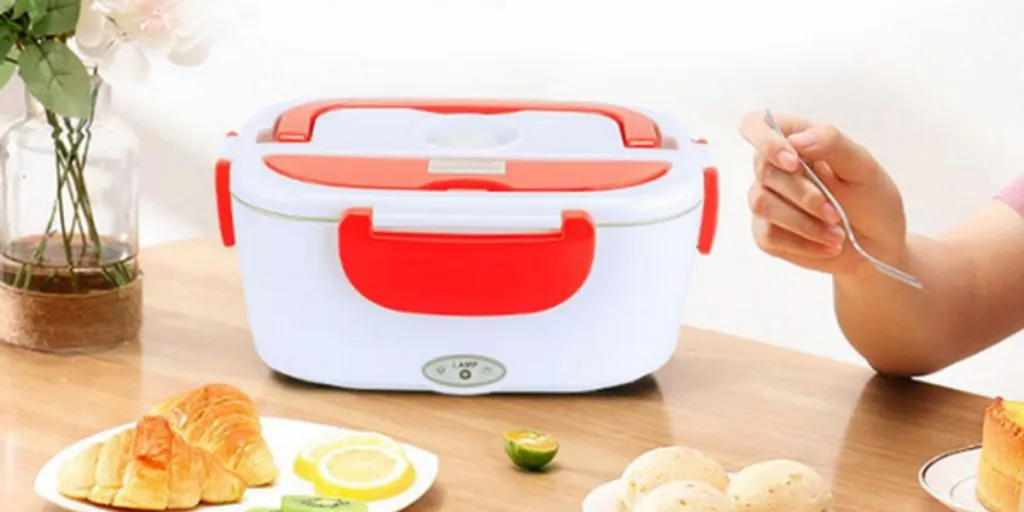Health and wellness concerns are driving significant changes in the food and beverages industry. Consumers are increasingly embracing dietary and lifestyle habits. They care about what they eat and how food products are sourced and prepared.
For example, Statista shows that 60% of consumers in the European Union are actively trying to eat healthy food. Similarly, about 50% of Americans say they are practicing healthy eating. These health-related factors, alongside budget considerations, have led to more people prioritizing homemade food. Consequently, these consumer changes have led to increased demand for electric lunch boxes.
These innovative lunch boxes are equipped with advanced features and technologies that allow users to heat food and keep it warm. They are usually made from food-grade plastic and contain stainless steel inner trays. They also have handles, which enable people to carry home-cooked meals. The enhanced functionality, convenience, and portability have made them popular among modern-day consumers.
This blog provides valuable insights into the electric lunch box market, including the various types available and how you can select the best options for your target customers in 2024.
Table of Contents
Innovative electric lunch box market overview
Types of electric lunch boxes
How to choose the best electric lunch boxes
Final thoughts
Innovative electric lunch box market overview
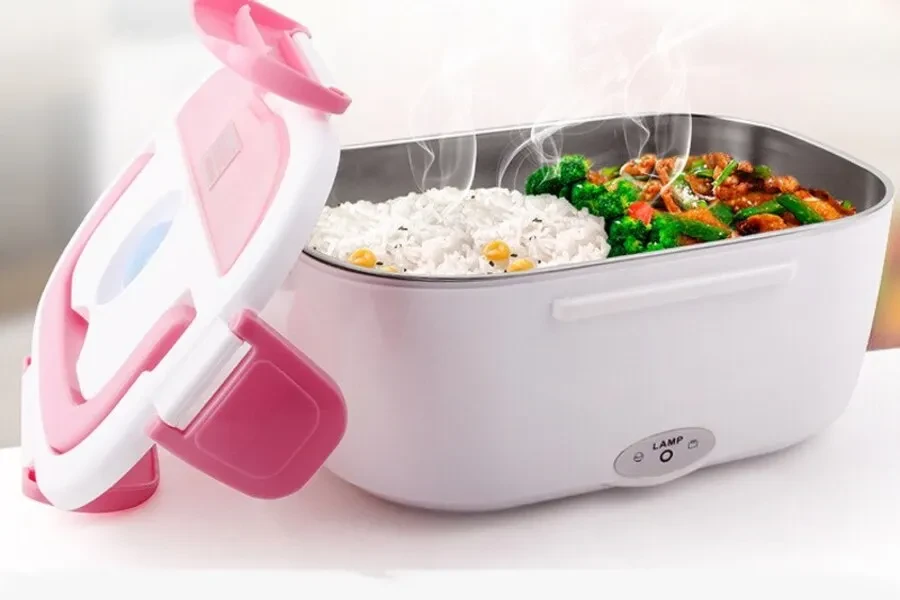
Electric lunch boxes are used for a range of purposes, including offices, homes, and outdoor activities. They provide innovative and convenient food heating and storage solutions. As a result, the electric lunch box market has been experiencing significant growth in recent years.
In 2023, the global market for electric lunch boxes was valued at US$ 635.72 million. It is projected to reach US$ 1.06 billion by 2031, growing at a compound annual growth rate (CAGR) of 6.60% between 2024-2031.
The key factors driving this market growth include:
- Increased health awareness and demand for healthy eating habits among consumers
- Increased disposable incomes and rapid urbanization
- E-commerce growth has significantly accelerated online sales of electric lunch boxes
- Advancements in electric heating technologies, resulting in improved performance and product appeal
The North American region dominates the market for electric lunch boxes. However, the Asia Pacific region is projected to be the fastest-growing market due to increased disposable income resulting from urbanization and rapid economic development.
Some major global market players are U.S. companies Zojirushi Corporation and Haven Innovation, as well as Indian companies Cello World and Sociosis Productions.
Types of electric lunch boxes
Electric lunch boxes come in different types, differentiated based on various factors like technologies used, materials, layers, and compartments, among others.
Here is an overview of the various types available:
1. Grid electric lunch boxes
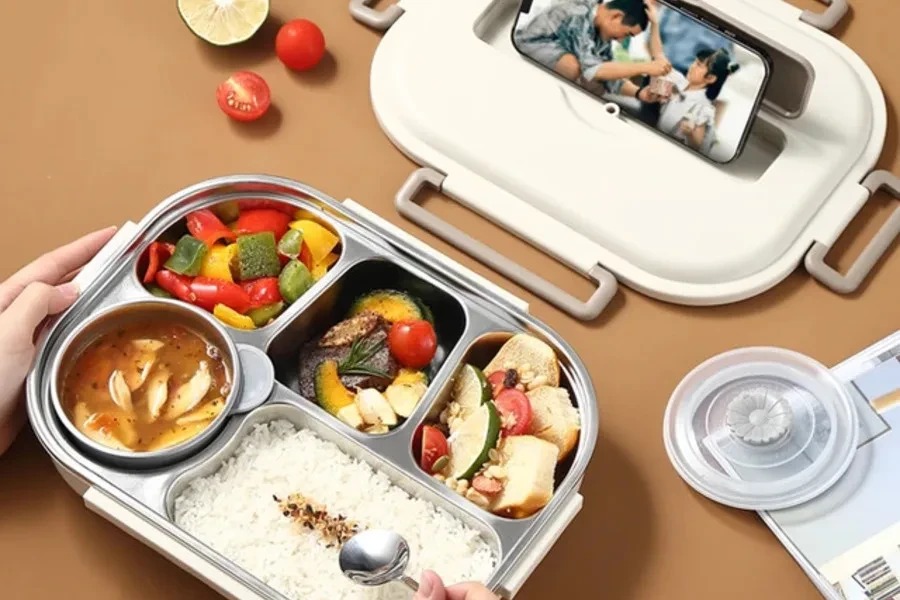
Grid electric lunch boxes are innovative lunch boxes designed with multiple compartments or grids.
Uses
- The compartments allow users to organize different types of food items without mixing flavors
- Versatile and ideal for portion-controlled meals
- Great for on-the-go use, such as commuting or traveling
Features
- They have multiple compartments that enable users to organize food
- Some models have removable dividers, which allows for customization
- They contain features like insulation to keep the food fresh and safe
- They are compact and portable designs
2. Container electric lunch boxes
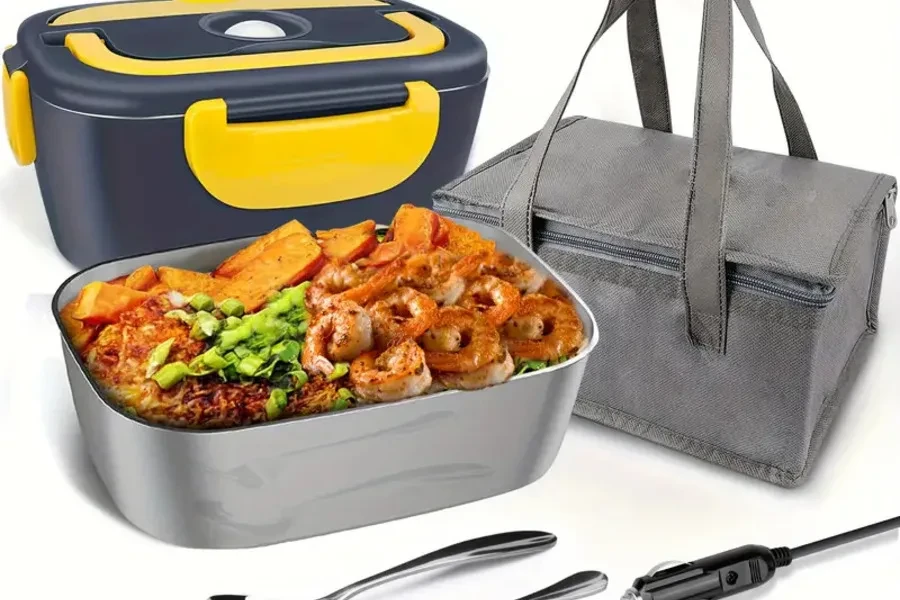
Container electric lunch boxes feature a single, larger container or bowl for storing food. Unlike grid lunch boxes, these lunch boxes do not have separate compartments, thereby offering a simpler and more efficient design.
Uses
- Suitable for packing bigger portions or meals for multiple servings since they have a larger capacity
- The single-container design makes them easy to use and clean
- Portable for travel and commuting purposes
Features
- The design makes it easy for the heating element to distribute heat across the container evenly
- Some models include locking lids or carrying handles for convenience
- Some models have temperature control features
- They come with cords and plugs to connect to the electrical power source
- Some models have indicator lights to show when the lunch box is powered on
3. Single vs. multi-layer electric lunch boxes
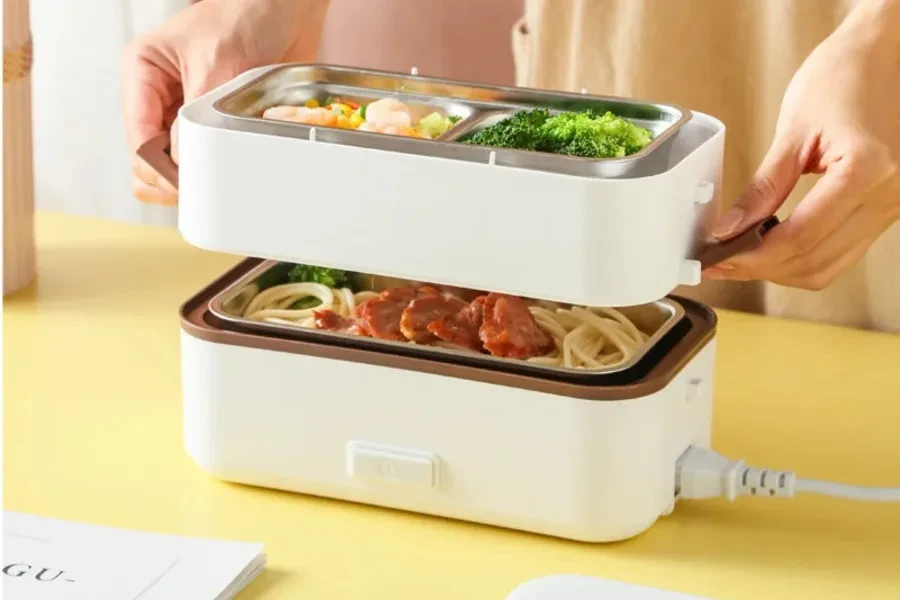
Electric lunch boxes come in multiple layers, including single, double, or multiple tiers. The single layer has only one compartment used to store or heat food. The double layer has two tiers, while the multi-layer has more than two layers stacked vertically.
Uses
- Double and multi-layer lunch boxes are used to pack different dishes separately
- Single-layer lunch containers are suitable for smaller food portions or individual servings.
- Multi-layer lunch boxes can be used to carry food for more than one person
Features
- All have compact and portable designs
- Multi-layer allows vertical stacking, which maximizes space
- They have an intelligent plug-and-heat feature
- They have leakproof and airtight lids, ensuring food safety and maintaining freshness
- Some models have electric auto cut-off features to prevent overheating and to serve as electrical shock proofing
4. Corded vs. cordless electric lunch boxes

Corded electric lunch boxes operate by plugging into a power source, such as a wall outlet or a car adapter. Some models have detachable cords, making them easy to store and organize.
Cordless electric lunch boxes are equipped with rechargeable batteries, which allow users to heat or warm up food without needing a direct power source.
Uses
- Corded meal boxes are suitable for indoor use where power outlets are available
- Cordless lunch boxes are ideal for on-the-go use, such as commuting, travel, or outdoor activities
Features
- Cordless lunch boxes are more convenient and flexible
- Corded meal boxes come with a power cord and plug.
- Both types may feature insulation and various heating settings for customization
- Some models of both corded and cordless have indicator lights, auto cut-off, and temperature control settings
5. Stainless steel electric lunch boxes
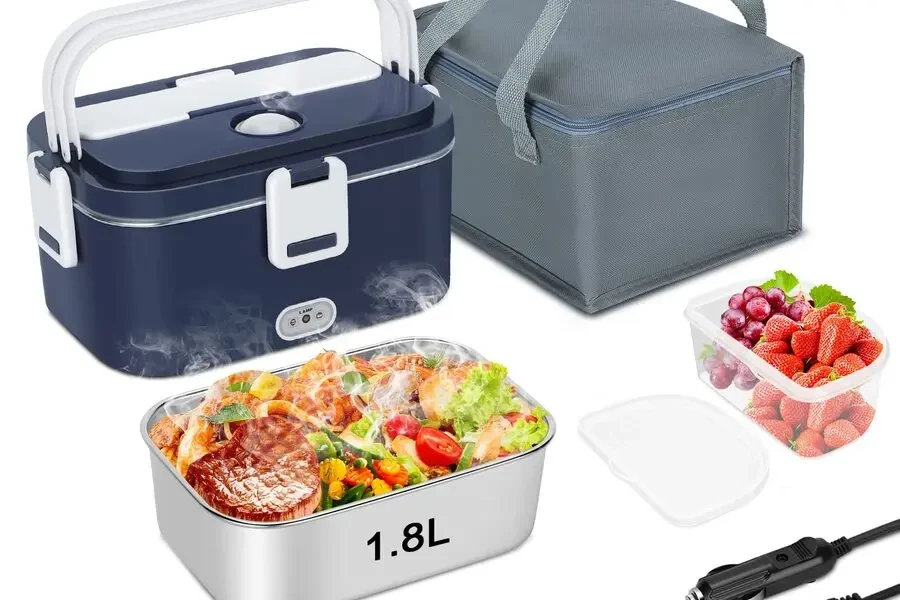
Stainless steel is known for its durability, non-toxic properties, and resistance to corrosion and rust. Electric lunch boxes made from this material have multiple uses and features that make them stand out among customers.
Uses
- Safe and hygienic storage for food
- Preserves freshness without the risk of contamination from harmful chemicals
- Ideal for health-conscious individuals
Features
- Inner trays made from stainless steel for durability and safety
- Dishwasher-safe and easy-to-clean
- Suitable for heating and storing a variety of foods
- Often have an insulation layer made from food-grade plastic or other insulating materials
How to choose the best electric lunch boxes

Different customers consider different factors when choosing an electric lunch box depending on their needs and preferences. Businesses selling these products should have a diverse inventory to accommodate diverse customer expectations.
Some factors to consider when selecting electric lunch boxes to sell to your ideal target customers include:
Functionality
The electric lunch boxes should fulfill customers’ intended purpose efficiently. Some considerations to assess are heating performance, insulation quality, ease of use, and the ability to keep food fresh. Customers expect electric lunch boxes to heat meals evenly and maintain the desired temperature for an extended period.
Design and size
Businesses should consider the target market and select designs that align with their customers’ lifestyles and usage patterns. For example, compact and lightweight designs are ideal for individual on-the-go users, while larger capacities may suit those who need to pack multiple servings or larger portions.
Material and durability
The material used in creating electric lunch boxes impacts their durability, safety, and overall quality. For instance, stainless steel options offer durability, safety, and resistance to corrosion, while food-grade plastic options are lightweight and budget-friendly. Ultimately, the products selected should be made from high-quality materials to ensure long-term satisfaction and safety for customers.
Safety and compliance
Businesses should ensure that the electric lunch boxes are safe and comply with relevant regulations and standards. Products should undergo rigorous testing to meet safety requirements and certifications. This provides customers with peace of mind regarding their use.
Therefore, businesses should partner with reputable manufacturers and suppliers that adhere to industry standards and guidelines.
Price and value
Price has a significant impact on customers’ decision-making when purchasing lunch boxes. The selected electric lunch boxes should provide good value for money, balancing quality, features, and affordability. Pricing strategies should be competitive within the market while still allowing for sustainable profit margins.
Final thoughts
Healthy lifestyles have become popular around the world. As a result, people are looking for innovative solutions to store and carry homemade meals either to work, school, or other outdoor places. This has led to increased demand for innovative electric lunch boxes, creating many opportunities for businesses to supply to this growing market.
To maximize the potential of this opportunity, businesses should have a diverse inventory. This may include different types of electric lunch boxes, such as grids, containers, single, double, and multiple-layer boxes, corded and cordless, and those made from stainless steel. Considerations such as functionality, design, size, material, durability, price and value can help choose the best types for different end customers.
And finally, looking for innovative electric lunch box suppliers for your business? Then make sure you check out the offers on Alibaba.com.
